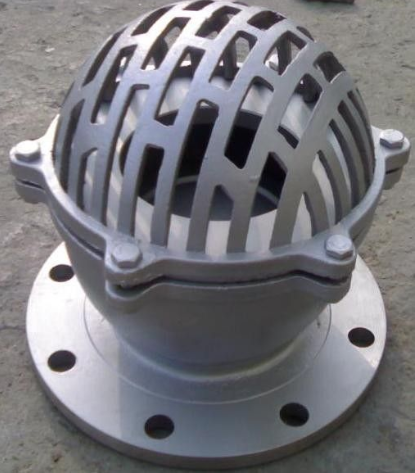UAE Valves is well known for Foot valve supplier in Dubai. It is a specialized type of check valve designed for vertical pump applications. To stop water from flowing backward when the pump is off, foot valves are placed in pipeline bottoms or in the suction of pumps. When a pump is turned on, it permits liquid to pass through one end of the valve and out the other. When the pump is switched off, the liquid in the pipes is saved for the next time it is needed and the pump is kept primed by stopping the flow of fluid in either direction.
Working: Foot valves are often submerged in the liquid source and positioned at the bottom of suction pipes. The suction pipe experiences low pressure when the pump is turned on. As a result of this pressure difference, liquid flows into the pump. The construction of the foot valve permits liquid to enter but stops it from exiting.
When the pressure from the entering liquid is higher than the pressure from the pump, a flap or ball inside the foot valve opens. Liquid can now enter the pump as a result. As soon as the pump is turned off, the suction line’s pressure equalizes and the flap or ball shuts, sealing the valve and stopping any liquid from returning to the source.
Function:
1)Backflow is prevented with a foot valve, which is a one-way check valve that is fitted at a pump’s suction inlet.
2)The foot valve keeps the pump primed, which keeps the pump full of liquid and enables efficient operation. It does this by avoiding backflow.
3)Ensures a consistent supply: By keeping the pump from losing its prime and needing to be re-primed, the foot valve helps provide a constant, uninterrupted flow of fluid to the pump.
Advantages:
1)These foot valves stop energy waste while preventing the potential harm that dry runs can do to water pumps.
2)In the absence of these foot valves, when the pump is turned off, the water would go back to its original source by flowing downward via the pipe.
3)To facilitate installation, most of these valves are made with self-tapping male and female threads.
4)The internal balls ensure prompt valve response and sealing, in addition to their adaptability to a range of water pump applications.
5)When compared to other pump priming valves, they are less expensive to operate.
6)Water pumps can last longer overall when they have foot valves of high quality.
They are lightweight and reasonably priced.
Industries:
1)Commercial trucks pneumatic brake lines
2)Vehicle wash programs
3)HVAC systems
4)Pools, wells, and ponds
5)Systems of irrigation
6)In rivers and lakes, sump pumps and intake pumps
7)Fire safety systems in rural areas
The four fundamental components of the foot valve universal design are as follows:
1)Strainer or screen: Sediments, trash, and other solid particles are kept out of the valve by the screen.
2)Disc: When the foot valve operates, this is the door or gateway that opens to let media in. To ensure lifespan, discs are typically made of heavy-grade materials like brass, steel, or bronze.
3)Body: The foot valve’s main component, the body housing the whole valve mechanism. Brass, bronze, stainless steel, cast or iron can be used for the body.
4)Seat : It is the area of the body that has silicon or rubber o-rings to stop leaks when the pump is switched off and the valve is closed.
Description:
Available Materials: SS304, SS316, Cast Iron and Ductile Iron, WCB
Class: 150 to 300
Nominal Pressure: PN10 to PN63
Size: 1/2” to 24”
Ends: Flanged, Threaded
Showing the single result



